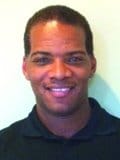
More Weight Control, Nutrition & Exercise Articles
No Time For Exercise?
What fits your busy schedule better? Exercising 30 minutes a day or being dead 24 hours a day?
Starting at around the age of 40, we lose between 0.8 and one percent of our muscle strength each year. At age 60, it can accelerate to 1.5 percent a year, and by age 70, unchecked, it can increase to three percent a year. Slips on ice and simple falls can result in moderate to severe injuries, such as hip fractures, and increase the risk for early death.
Physical fitness in middle age can be a powerful protector against weight gain, frailty, heart conditions, lowered self-esteem and much more. In fact, regular midlife exercise might be the most powerful way to stay confident, strong and healthy and prevent chronic illness.
A well designed fitness plan can help stop and even reverse the damaging effects of osteoporosis. A recent study published in The Journal of Clinical Endocrinology and Metabolism found that when pre-menopausal women who worked out for as little as two hours a week, they maintained healthier bones than those who do not exercise.
Research has found that regular moderate exercise can help stave off dementia and Alzheimer's.
If you're worried that you're too late to join the exercise game to make a difference, you'll need to come up with a better excuse for not getting focused and breaking a sweat. You can make gains in your strength and cardiovascular health even when you're well into your sixties, seventies, and eighties.
A well-rounded fitness plan includes three types of activity cardiovascular (aerobic) exercise that targets your heart, strength training that targets muscles and prevents the muscle loss that comes with advancing age, and flexibility training to keep you limber and preserve balance.
For strength training, working out two to three days a week is ideal – but never on consecutive days when just beginning a routine. Working out breaks down muscles and the rest builds them back up. Begin with whole-body exercises such as push-ups, sit-ups, or squats. Then you can add different exercises for specific smaller muscles like bicep curls and triceps extensions.
Three sets of 10 repetitions is a good starting point. Although free weights and weight machines are effective, in the beginning consider using resistance bands, which are lengths of stretchy material that work muscles without your having to lift actual weights.
Other Articles You May Find of Interest...
- Five Reasons to run a marathon: Get your trainers on…
- MAY MARKS CELIAC AWARENESS MONTH
- Lifestyle Changes To Lower Cholesterol
- Let’s Get Physical: Making Physical Activity a Part Of Your Family Life
- Bariatric Surgery and Sleep Apnea
- Top 4 Benefits Of Enrolling In Nutrition Courses Today
- Essential Guide to Safely and Effectively Assessing Health Supplements

















